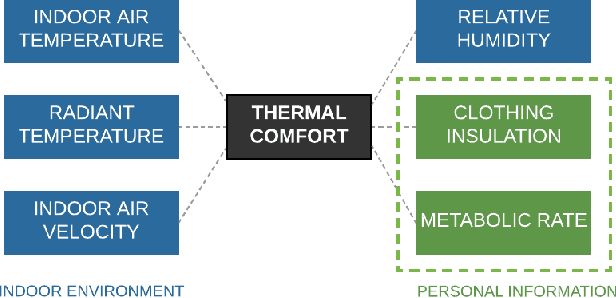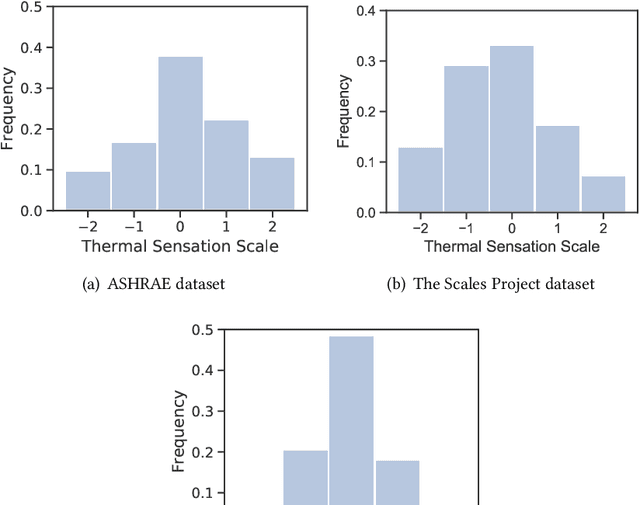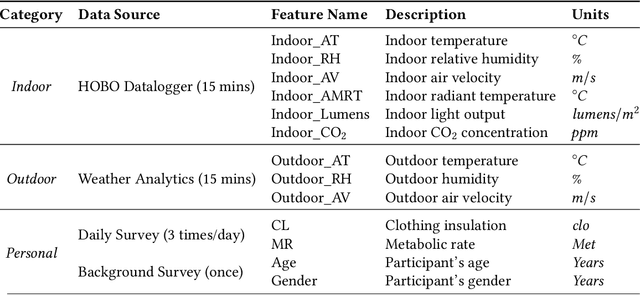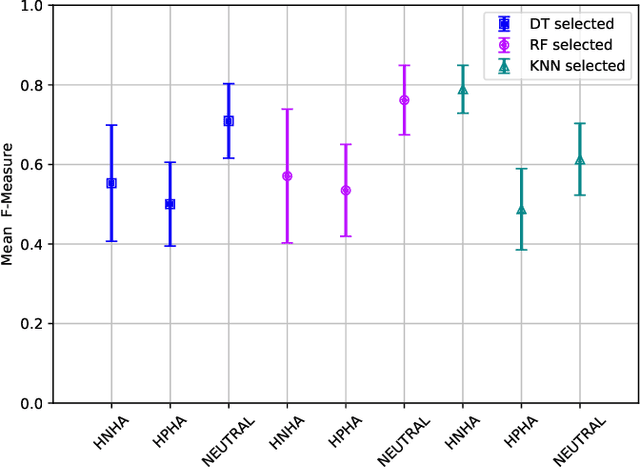Klaus David
Transfer Learning for Thermal Comfort Prediction in Multiple Cities
Apr 29, 2020



Abstract:HVAC (Heating, Ventilation and Air Conditioning) system is an important part of a building, which constitutes up to 40% of building energy usage. The main purpose of HVAC, maintaining appropriate thermal comfort, is crucial for the best utilisation of energy usage. Besides, thermal comfort is also crucial for well-being, health, and work productivity. Recently, data-driven thermal comfort models have got better performance than traditional knowledge-based methods (e.g. Predicted Mean Vote Model). An accurate thermal comfort model requires a large amount of self-reported thermal comfort data from indoor occupants which undoubtedly remains a challenge for researchers. In this research, we aim to tackle this data-shortage problem and boost the performance of thermal comfort prediction. We utilise sensor data from multiple cities in the same climate zone to learn thermal comfort patterns. We present a transfer learning based multilayer perceptron model from the same climate zone (TL-MLP-C*) for accurate thermal comfort prediction. Extensive experimental results on ASHRAE RP-884, the Scales Project and Medium US Office datasets show that the performance of the proposed TL-MLP-C* exceeds the state-of-the-art methods in accuracy, precision and F1-score.
Angry or Climbing Stairs? Towards Physiological Emotion Recognition in the Wild
Nov 12, 2018



Abstract:Inferring emotions from physiological signals has gained much traction in the last years. Physiological responses to emotions, however, are commonly interfered and overlapped by physical activities, posing a challenge towards emotion recognition in the wild. In this paper, we address this challenge by investigating new features and machine-learning models for emotion recognition, non-sensitive to physical-based interferences. We recorded physiological signals from 18 participants that were exposed to emotions before and while performing physical activities to assess the performance of non-sensitive emotion recognition models. We trained models with the least exhaustive physical activity (sitting) and tested with the remaining, more exhausting activities. For three different emotion categories, we achieve classification accuracies ranging from 47.88% - 73.35% for selected feature sets and per participant. Furthermore, we investigate the performance across all participants and of each activity individually. In this regard, we achieve similar results, between 55.17% and 67.41%, indicating the viability of emotion recognition models not being influenced by single physical activities.
 Add to Chrome
Add to Chrome Add to Firefox
Add to Firefox Add to Edge
Add to Edge